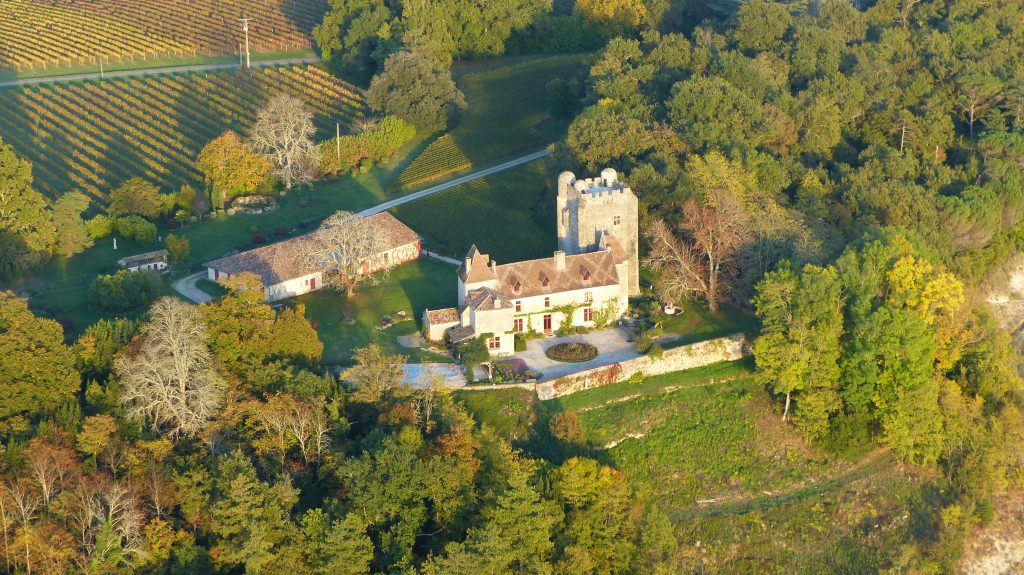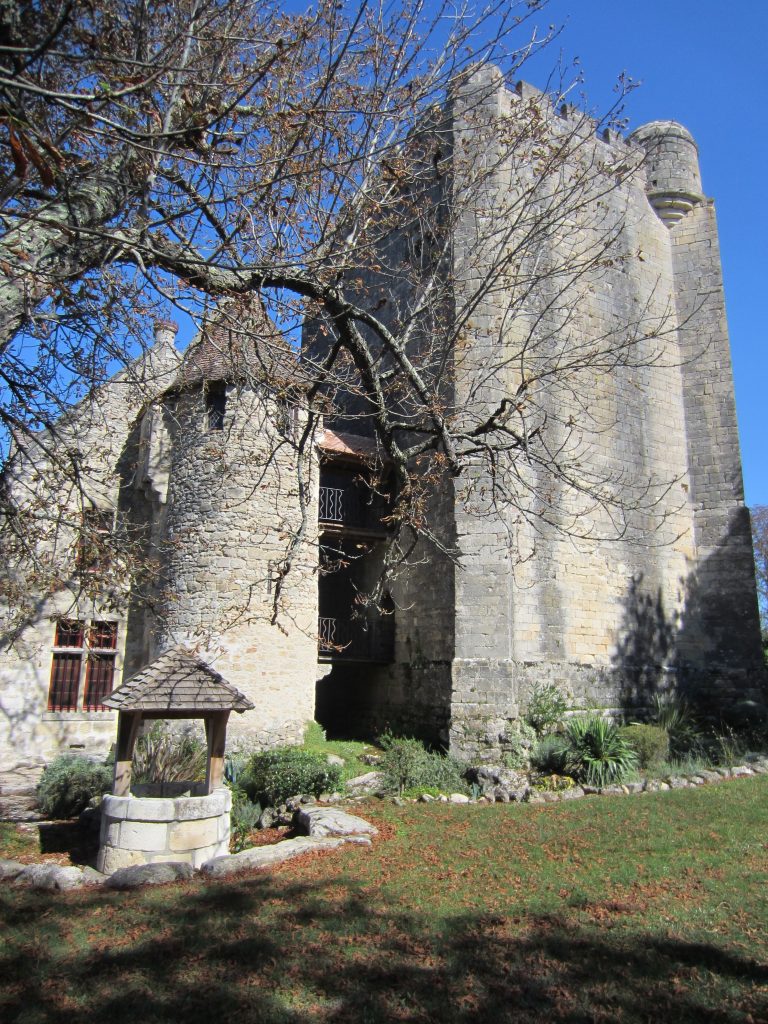
Located 15 kms south-east of Saint-Émilion, on a hill overlooking the Gamage river valley, the 75 acres of Bruignac are a domain of centuries-old oaks, horse chestnut trees, black austrian pines, vines and gardens.
Built near the traces of a neolithic village ( -3 000), and the ruins of a gallo-roman villa of the first century and those of a church of the XIIth, the chateau encompasses a tower elevated in the XIVth leaning on a manor rebuilt in the XVth (see attached photos and wine bottle labels).
Winemaking has been carried out at Bruignac since at least the year 1000, for sure, and possibly since the gallo-roman villa.
The history of Bruignac is now well-known, through the notes taken by Léo Drouyn when he consulted the archives of Bruignac in 1856, and through the archives themselves which were “rediscovered” in 2012 in the Château de Cugat. A book authored by David Souny and sponsored by the present owners covers in a quite complete manner the history and the architecture of Bruignac.

Man has inhabited Bruignac for more than 5 000 years:
° a neolithic village ( -3 000) stood on the “rocky spur” of Bruignac where the property is located to-day
° a gallo-roman villa (Brunaco) prospered here from the first to the third century AD;
° a “motte” (small fort built of earth and wood) and its hamlet of auxiliary buildings were home of the Lords of Bruignac in year 1000
° a church (Saint Maur de Bruignac) built on the ruins of the gallo-roman villa in the 12th century during the third wave of christianisation of Aquitaine was destroyed during the Religions’ Wars of the 16th.
° the present tower and manor replaced the “motte” around year 1300.
Vines have been grown, and wine has been made at Bruignac since year 1000 for sure, and probably since the time of the gallo-roman villa. Thus throughout the centuries, owners of Bruignac have protected its authenticity aided by the fact that Bruignac remained in the same family for 650 years, and then in a second family for another century.
Recent owners invest in reviving the property and progressively give it back its original grandeur.

The terrace of the manor faces the valley of the Gamage river. From the top of the 14th century tower, a 360° view spans Saint-Émilion, the Aquitaine bridge, Rauzan, Mérignas, Blasimon, Ruch, Pujols and Castillon-la-Bataille.
Auxiliary buildings include the reconstructed winery, the green-house, the dovecote destroyed during the French Revolution, the pigeon-house, the hen-house and, under the vines, the traces of the neolithic village and the ruins of the gallo-roman villa and the church. In the surroundings, stand the smallholdings of Bruignac (Petrus and Broue), the watermill and the windmill.